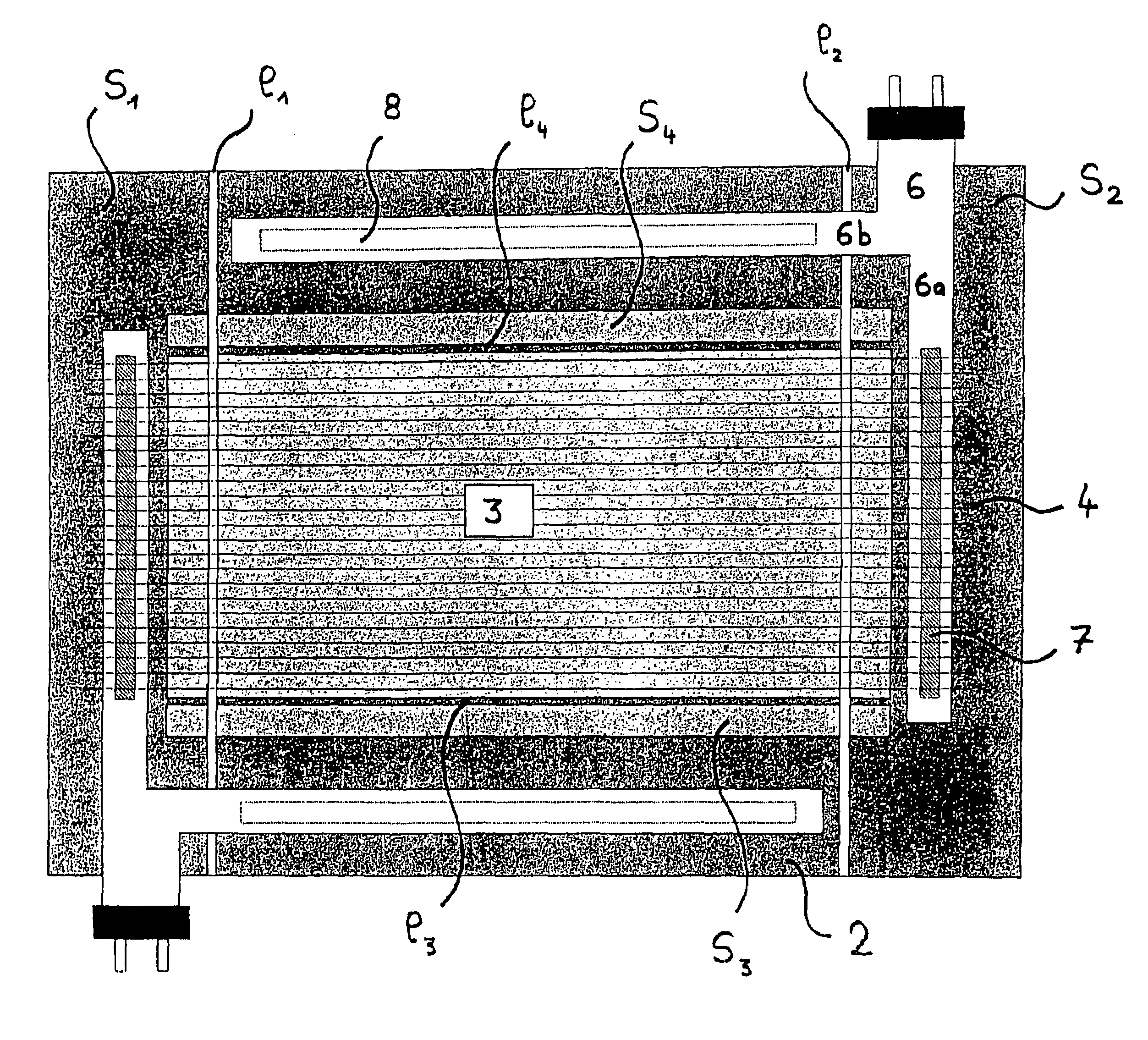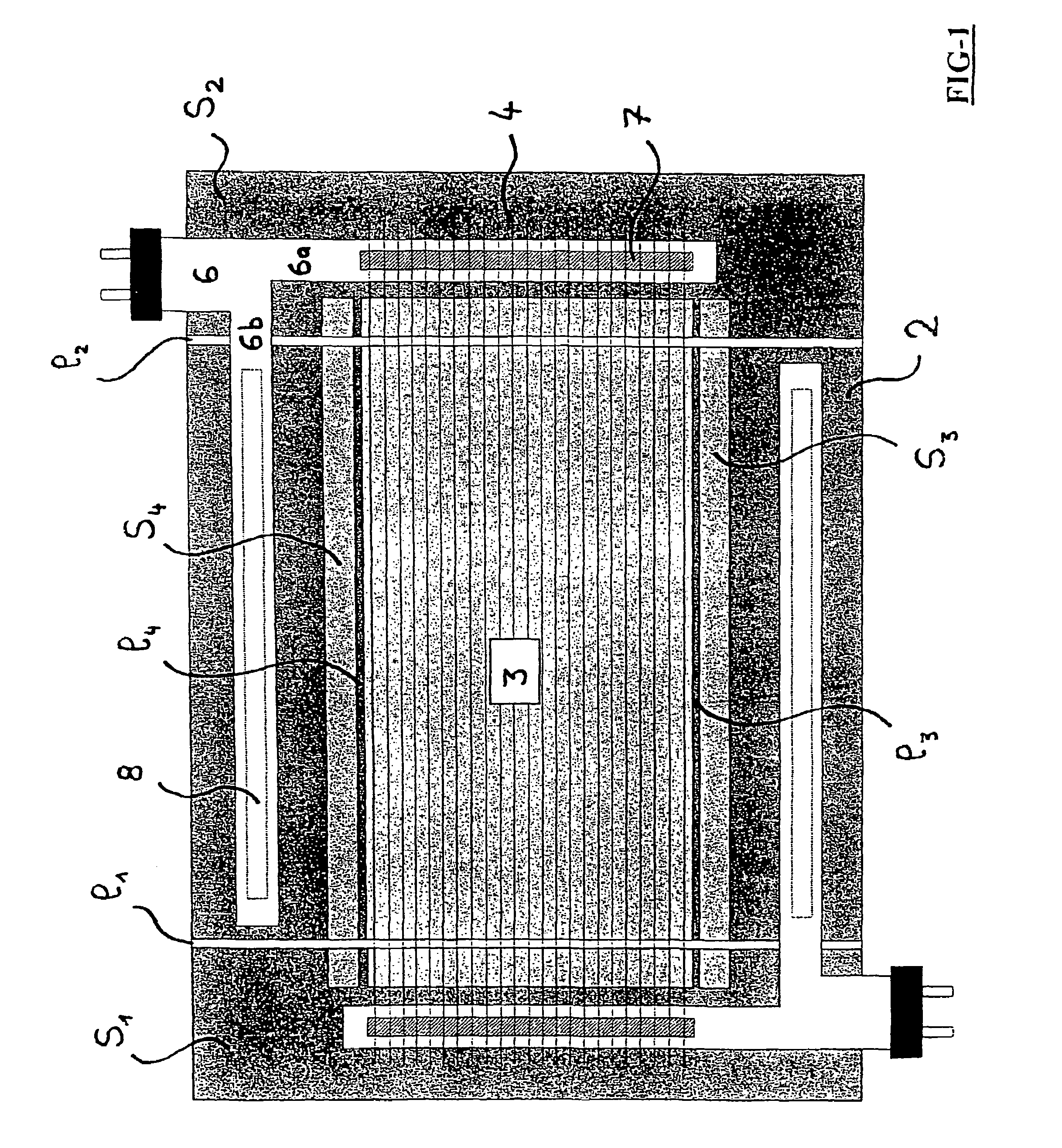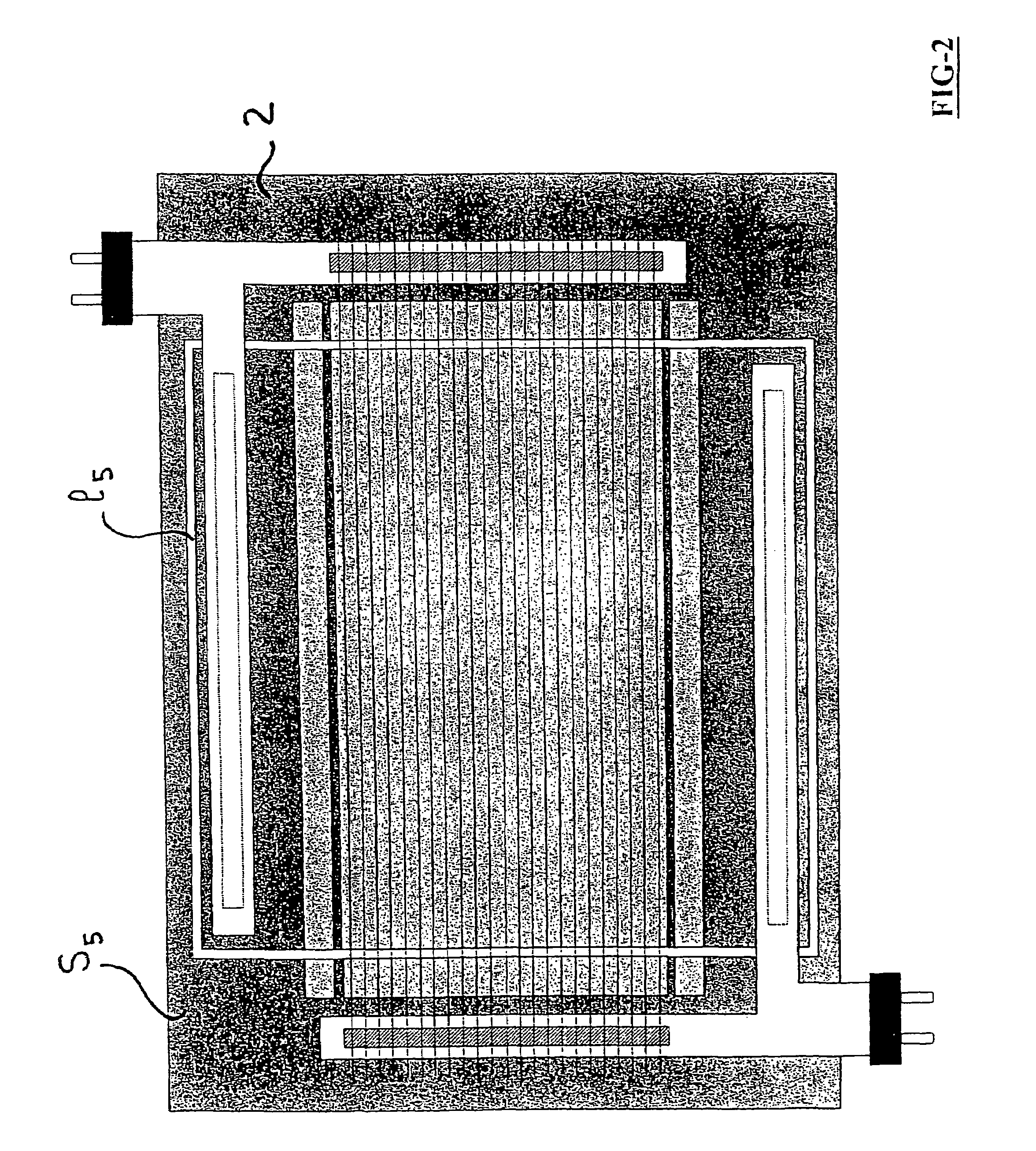Electrochemical device such as electrochromic or photovoltaic device and electrical connection means thereof
a technology of electrochromic or photovoltaic devices and electrical connection means, which is applied in the direction of electrical equipment, fuel cells, sustainable buildings, etc., can solve the problems of reducing the “active” area and complicating the manufacture of the device, and achieves the effect of improving the connection and being simple and flexible to implemen
- Summary
- Abstract
- Description
- Claims
- Application Information
AI Technical Summary
Benefits of technology
Problems solved by technology
Method used
Image
Examples
example 1
[0095]This is the configuration shown in FIG. 1:[0096]The lower conductive layer 2 covers the whole area of the glass pane. Its margins are set along two incision lines l1, l2 on its two smallest opposed sides (layer with overall rectangular shape), by means of a laser. The incision lines also affect the active system and the upper electrode since they are made after depositing all the layers. These two lines therefore delimit two regions s1 and s2 which are deactivated for the whole electrochromic system, including the two electrodes.[0097]The margins of the active system and the upper conductive layer 3 are also set along two other incision lines l3, l4, after depositing all the layers. These incisions do not affect the lower conductive layer, and are made on the longest edges of the system and of the upper conductive layer. The active system and the upper conductive layer also cover a rectangular region of the substrate, with dimensions less than those covered by the lower conduc...
example 2
[0101]This is the configuration shown in FIG. 2 which is quite similar to that of example 1.
[0102]The difference with example 1 resides in the way in which the margins of the lower conductive layer 2 are set: in example 2, the incision is carried out along a closed line l5, which delimits an inactive region s5 over the entire periphery of the lower conductive layer, and over two opposed edges of the active system (as in the previous case).
example 3
[0103]This is the configuration shown in FIG. 3 and which is a variant of the two preceding figures. This time, the margins of the lower conductive layer 2 are set along two closed lines l6, l7 which have a substantially rectangular outline, partly on the region covered by the conductive layer 2, partly on the region also covered by the active stack 3. As in Example 1, there are also two deactivated regions s6, s7 on the two opposed edges of the layer 2, delimited by the two lines l6 and l7, and which therefore do not go up to the extreme perimeter of the layer.
[0104]These three examples therefore have in common that they deactivate the electrochromic glazing on two of its opposed edges, in regions overlapping the region covered only by the lower conductive layer, and the region covered both by this layer and by the active stack 3.
PUM
| Property | Measurement | Unit |
|---|---|---|
| diameter | aaaaa | aaaaa |
| thick | aaaaa | aaaaa |
| thick | aaaaa | aaaaa |
Abstract
Description
Claims
Application Information
 Login to View More
Login to View More - R&D
- Intellectual Property
- Life Sciences
- Materials
- Tech Scout
- Unparalleled Data Quality
- Higher Quality Content
- 60% Fewer Hallucinations
Browse by: Latest US Patents, China's latest patents, Technical Efficacy Thesaurus, Application Domain, Technology Topic, Popular Technical Reports.
© 2025 PatSnap. All rights reserved.Legal|Privacy policy|Modern Slavery Act Transparency Statement|Sitemap|About US| Contact US: help@patsnap.com



